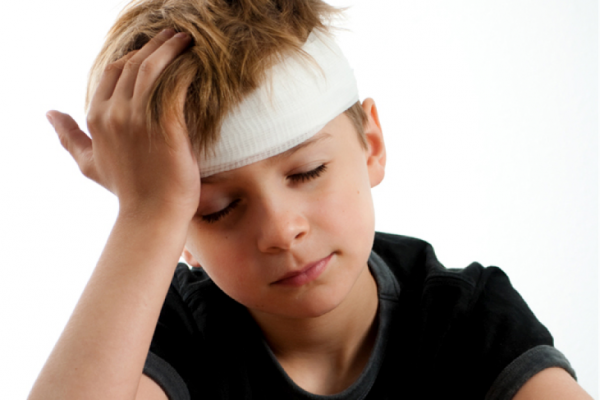
Introduction
Out of injuries that your little one can experience, childhood concussion holds a prominent place. It is a type of a brain injury, which has the ability to create a tremendous impact on the functionality of the brain. It is true that child concussions are not a life threatening health condition. However, they can create a tremendous impact on the future of your little one in the long run. On the other hand, concussions are capable of causing bleeding around your brain as well. Some of the long term side effects that your little one can get as a result of concussions include memory problems, mood disorders and recurring headaches.
What can lead your child towards concussions?
Falls can be considered as the most prominent reason why little ones are being subjected for concussions. These accidents often take place at school or home. Kids love to experiment different things from their childhood. As a result, they will tend to climb trees as well. Due to this reason, their likelihood to end up with accidents will increase.
How to understand whether your little one is affected with concussions or not?
As soon as your child encounters an accident, he will look fine. However, there can be internal damages to the head. It will take some time for the symptoms of concussions to appear. When you keep an eye on the behavior of your little one, you will be able to understand whether he is affected with concussions or not. Since you know how your child behaves, you will find it as an easy task to identify the changes in behavior with minimum hassle.
The human brain is surrounded by fluids. It provides enhanced protection to the brain when it is bumping up and jiggling against the skull. During the concussions, this fluid will not be able to provide the protection that is needed by the brain.
In some of the students, it will be possible for you to identify immediate symptoms of concussions after a fall. These immediate symptoms include drowsiness, vomiting, nausea, dizziness and headache. In addition, you will be able to witness physical imbalance and emotional changes as symptoms as well. If you notice the above mentioned symptoms after the head of your little one hit somewhere, you should figure out that they are signs of concussions. Hence, you will need to take appropriate steps to obtain medical assistance.
Treatment and recovery for the child concussion
Several treatment options are available for the kids who are affected with concussions to go through. You just need to take your child to the doctor and it will be possible for him to go through the most appropriate treatment options.
Once the head of your child hits something, you should allow his brain to rest. In other words, you will need to take appropriate steps in order to cut the emotional, mental and physical stimulation that your little one will go through. Then you will have to introduce cognitive and physical activities to the little one along with time.
You must double check to see whether the conditions have improved. Otherwise, you are not recommended to move forward with this treatment plan. In fact, you need to allow time to heal the issues that your little one is going through. The doctor will often encourage you to keep the little one inside a dark room for a period of at least 48 hours. But this will not be practical in most of the instances. But you can still keep the little one away from visiting home or school.
Throughout the recovery phase, you can seek legal assistance from a reputed brain injury attorney such as Andrew Ellis, Senior Partner at Ellis Law Corporation. Then you will be able to figure out what legal aspects that you need to take a look at when dealing with the negative consequences. On the other hand, you will be able to go ahead and promote your little one to take part in quiet activities. Drawing and reading books can be considered as the best example to prove the above mentioned fact. You need to make sure that the little one doesn’t spend time in physical activities, which can make the symptoms go worse.
This post comes from the TODAY Parenting Team community, where all members are welcome to post and discuss parenting solutions. Learn more and join us! Because we're all in this together.
